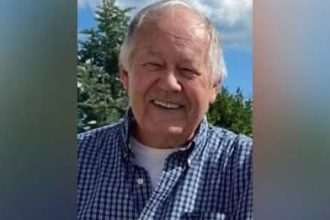Palm Springs, CA — In a tragic and shocking development, federal authorities have identified the perpetrator behind Saturday’s deadly explosion at the American Reproductive Centers, a prominent fertility clinic in Palm Springs, as 25-year-old Guy Edward Bartkus. A resident of Twentynine Palms, California, Bartkus carried out what federal investigators have classified as an intentional act of terrorism, leaving five individuals injured and himself dead at the scene.
The bombing, which occurred shortly before 11 a.m. near North Indian Canyon Drive and East Tachevah Drive, sent shockwaves through the quiet Palm Springs community. The blast was powerful enough to cause widespread damage to nearby buildings and vehicles and prompted an immediate emergency response from federal and local agencies.
Authorities uncovered an audio manifesto, recorded by Bartkus before the attack, which offers deeply disturbing insights into his motivations. In this manifesto, Bartkus espoused a pro-mortalist worldview—a radical philosophical stance opposing procreation on ethical grounds. He framed life itself as an imposition, one to which no one consents, and compared birth to a violation of personal autonomy. His statement read, in part: “I’m very against \[IVF], it’s extremely wrong. These are people who are having kids after they’ve sat there and thought about it. How much more stupid can it get?”
This sentiment reveals Bartkus’s fundamental objection to in vitro fertilization (IVF), the very procedure offered at the American Reproductive Centers. He saw IVF not merely as a medical procedure, but as a symbol of deliberate human creation, which he considered the pinnacle of irresponsibility and moral failure.
The FBI, in partnership with the Bureau of Alcohol, Tobacco, Firearms and Explosives (ATF), has taken the lead on the investigation. A tripod-mounted camera discovered at the scene suggests that Bartkus may have intended to livestream the bombing, further highlighting the calculated and theatrical nature of his actions. Authorities are currently analyzing the device, seeking to recover any digital evidence that might shed further light on his state of mind, timeline, or communications.
At a Saturday afternoon press briefing, an FBI spokesperson emphasized the gravity of the situation: “Make no mistake — this was an intentional act of terrorism.” Federal agents also executed a search warrant at Bartkus’ residence on Adobe Road in Twentynine Palms. He shared the home with 63-year-old Dianne Bartkus, believed to be either his mother or grandmother. No information has yet been released regarding whether Dianne Bartkus had any knowledge of her relative’s plans.
One of the most challenging aspects of this case, according to authorities, is the absence of a known social media presence for Bartkus. This void complicates efforts to track ideological affiliations, communication patterns, or connections to extremist groups. Unlike other domestic terrorists who often leave digital footprints across forums, social platforms, or encrypted messaging apps, Bartkus appears to have taken steps to remain largely invisible online, making it more difficult for investigators to determine if he was influenced by or affiliated with any larger movements.
California Governor Gavin Newsom was promptly briefed on the incident. His office released a statement confirming that the California Governor’s Office of Emergency Services (Cal OES) is coordinating closely with federal and local agencies to ensure the integrity of the investigation and the safety of the public. “We are doing everything we can to assist the investigation,” the statement read, “and we extend our thoughts to all those affected.”
The American Reproductive Centers, operated by Dr. Maher Abdallah, sustained substantial damage in the explosion, particularly to its consultation and administrative areas. Fortunately, the clinic’s IVF lab, which houses sensitive medical equipment and stores embryos and gametes in cryogenic tanks, was not affected. “Thank God today happened to be a day that we have no patients,” Dr. Abdallah told the Associated Press. “I really have no clue what happened.”
The physical damage, however, extends beyond the walls of the clinic. Initial witness photographs and videos, rapidly circulated on social media and reviewed by news outlets, depict shattered windows across several buildings and a vehicle that appeared to be either the source or a casualty of the explosion. Officials have not yet confirmed whether the car was instrumental to the detonation or merely caught in the blast radius.
Witnesses from the surrounding neighborhood reported a loud boom, with some feeling the tremor from several blocks away. Emergency crews, including fire personnel, bomb squads, and paramedics, flooded the scene within minutes. Roads in the area remain closed as investigators process the site for clues, debris, and structural vulnerabilities.
Bartkus’s manifesto provides a rare and chilling insight into a radical anti-natalist worldview that remains on the fringes of philosophical discourse but occasionally inspires extreme acts. In the recording, he repeatedly railed against the idea of existence itself, asserting that life is a harmful imposition. He likened life to a drug one is forced to consume, and suicide prevention measures to coercion to remain dependent on that drug. He objected strongly to the argument that the inability to obtain consent from a non-existent person invalidates the critique of procreation. Instead, he used that very impossibility to argue that birth is unethical.
Bartkus’s manifesto frequently referenced antinatalist philosophers such as Gary Inmendham, a controversial online figure known for advocating for extinctionist ideologies. Drawing from these sources, Bartkus articulated a view of the world where pleasure is merely the absence of suffering and where human life is a sequence of pain and temporary relief. He argued that the continuation of life perpetuates unnecessary suffering and that bringing new individuals into existence is a moral failing.
He extended his argument to critiques of society at large, including capitalism, consumerism, animal agriculture, and the justice system. These systems, he claimed, are designed to normalize suffering and distraction, maintaining what he saw as a cruel and indifferent existence. He singled out IVF clinics as particularly egregious offenders because, in his view, they represented deliberate and medically assisted creation of life, unrepentantly amplifying the harm of existence.
While Bartkus’s rhetoric is not entirely unique among radical anti-natalists, the translation of such ideology into violent action is extremely rare. Philosophers and ethicists across the ideological spectrum have condemned his logic and his actions, emphasizing that disagreement over existence does not and cannot justify terrorism.
Dr. Elizabeth Rowe, a professor of bioethics at Stanford University, commented, “This case is both tragic and deeply unsettling. Philosophical arguments about procreation, while academically interesting, must never be used to rationalize harm. The leap from ideology to violence is a dangerous one, and we must be vigilant in recognizing the warning signs.”
The Palm Springs bombing raises urgent questions about lone-wolf terrorism, the role of fringe ideologies in public discourse, and how such sentiments can escalate into violent extremism. The FBI has confirmed that they are now conducting interviews with individuals who may have known Bartkus, including family members, neighbors, and coworkers. Their aim is to reconstruct a clearer timeline of events and determine whether there were missed warning signs.
Local community leaders have also spoken out. Reverend Thomas Ramirez of the Palm Springs Interfaith Coalition called for unity and healing in the wake of the bombing. “We cannot allow hate or extremism to take root in our communities. Let us respond with compassion, understanding, and strength.”
As the investigation continues, authorities have confirmed that there is no current threat to the public. However, they caution that the implications of this attack will reverberate for some time. The combination of a high-profile target—a medical facility involved in the ethically charged realm of reproductive technology—and a perpetrator motivated by a nihilistic ideology presents a complex case that defies easy categorization.
Meanwhile, patients and staff at the American Reproductive Centers are left grappling with the trauma of the attack. Counseling services are being offered to all those affected, and plans are underway to rebuild the damaged areas of the clinic.
In the days ahead, further details from the ongoing federal investigation, analysis of Bartkus’s digital footprint, and potentially more of his recorded messages may emerge. For now, Palm Springs and the broader California community are left mourning the violence and questioning how such an act could have been prevented.
The case of Guy Edward Bartkus serves as a grim reminder of the intersection between ideology and action, and the urgent need to address mental health, philosophical radicalization, and community safety with renewed vigor and compassion.




